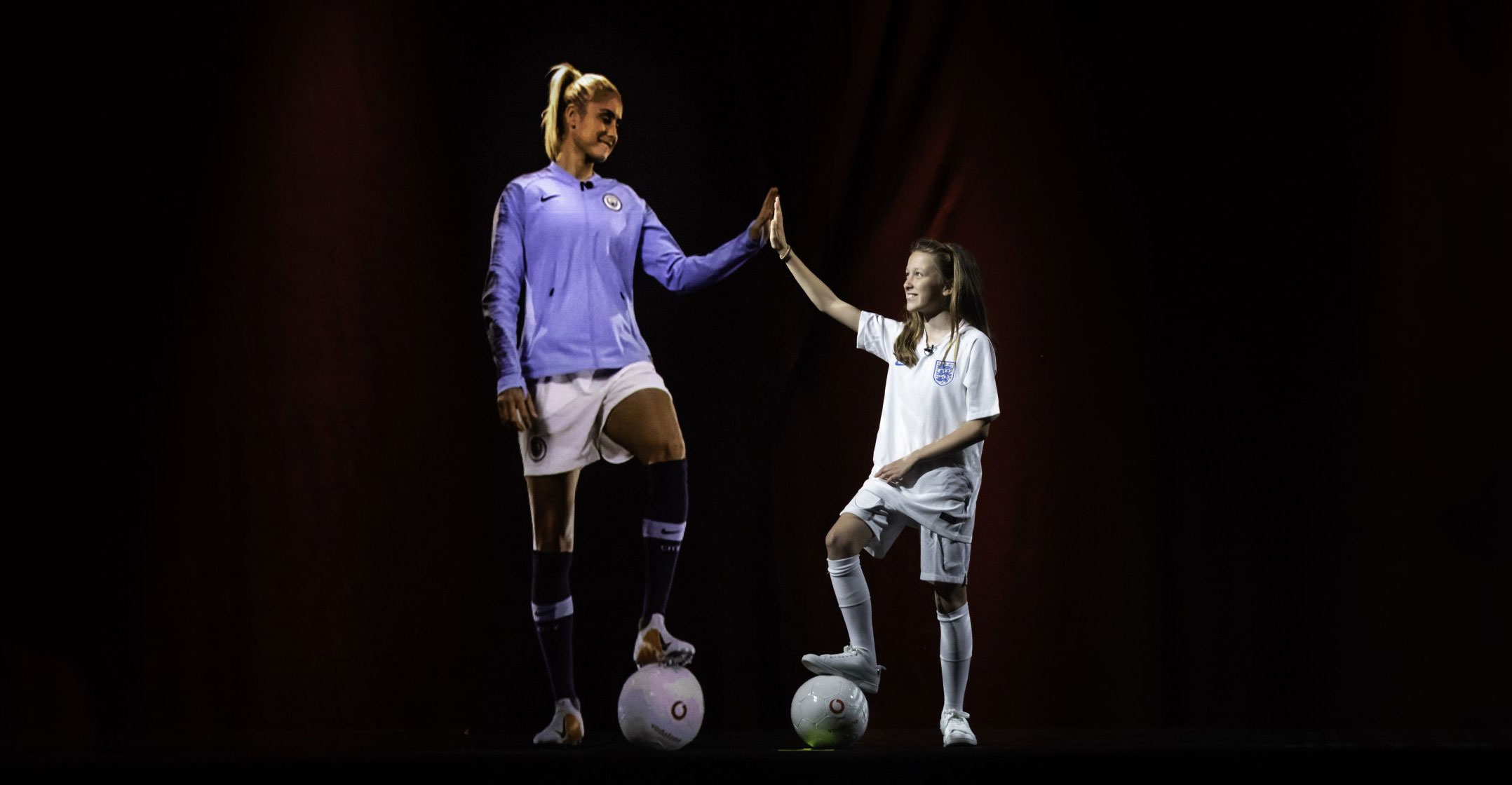
We’re told next-generation 5G mobile technology will unlock a future of self-driving cars, augmented reality and robotic surgery. Now how about 3D holograms?
Vodafone Group used an experimental 5G network on Thursday to conduct Britain’s first live holographic call.
The company’s engineers transmitted the three-dimensional image of a person standing in a studio in Manchester, northern England, to a virtual-reality headset at its headquarters in Newbury, west of London. The viewer could see the person as if they were standing in front of them.
The 3D image was also projected onto a stage for an audience, evoking parallels with the 1977 Star Wars movie scene in which the robot R2-D2 projects Princess Leia’s appeal for help to Obi-Wan Kenobi.
“Wow, that’s just like talking to the Emperor in Star Wars!” said Vodafone’s UK CEO Nick Jeffery, describing the reaction of a colleague’s daughter on seeing the result. “So this is even better than Star Wars. I hope you agree,” Jeffery added.
Such calls could be possible with the next-generation mobile service because data speeds may be 100 times faster than current 4G technology and there will be fewer delays in data being transmitted between networks and devices.
It took long for videoconferencing to become widespread due to the cost and large amount of equipment and holographic calling could also take several years to take off, said Scott Petty, chief technology officer of Vodafone’s UK unit.
“It’ll be a natural evolution of videoconferencing, but adding a 360-degree, more immersive element,” Petty said. — Reported by Joe Mayes, (c) 2018 Bloomberg LP




